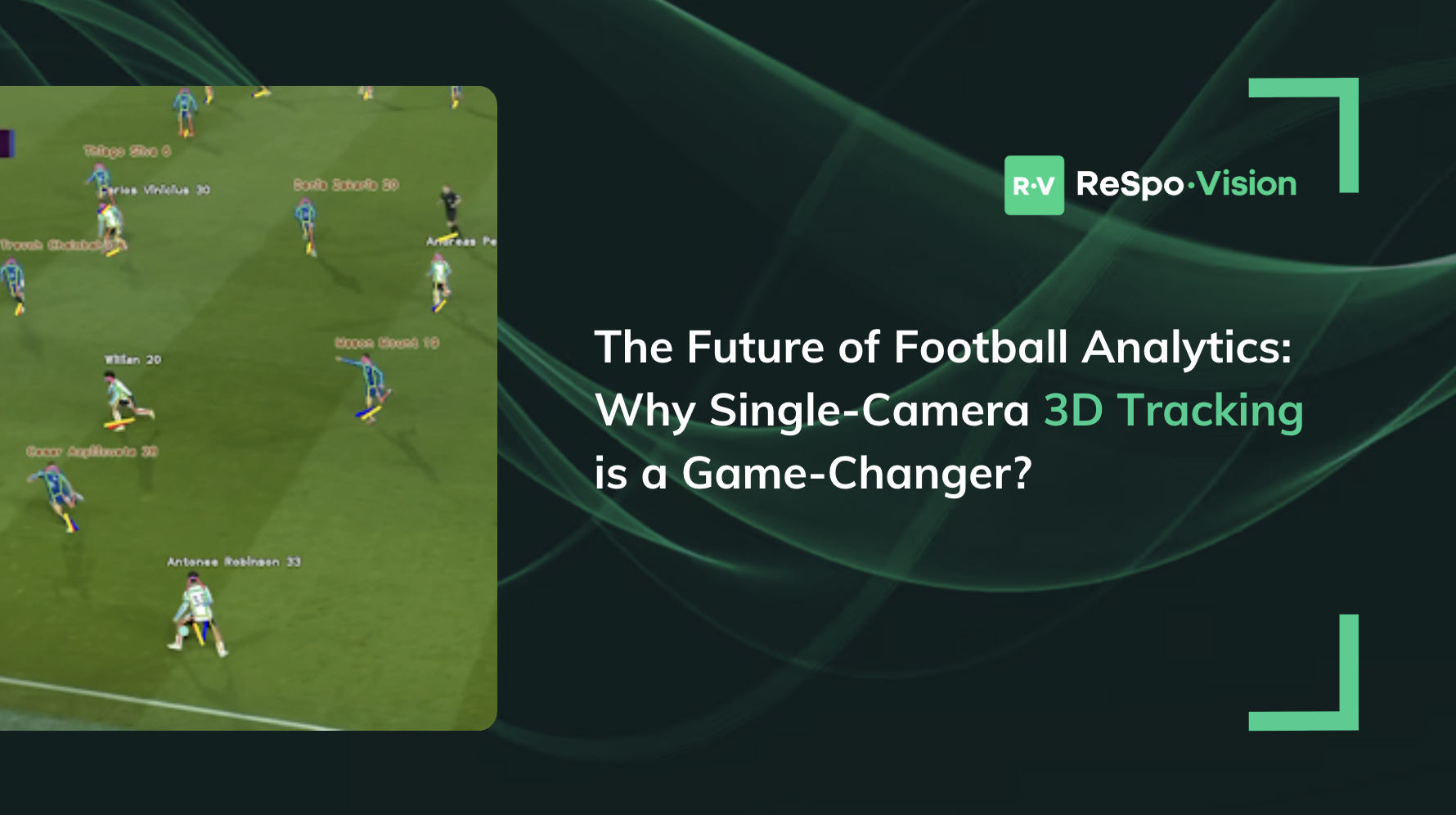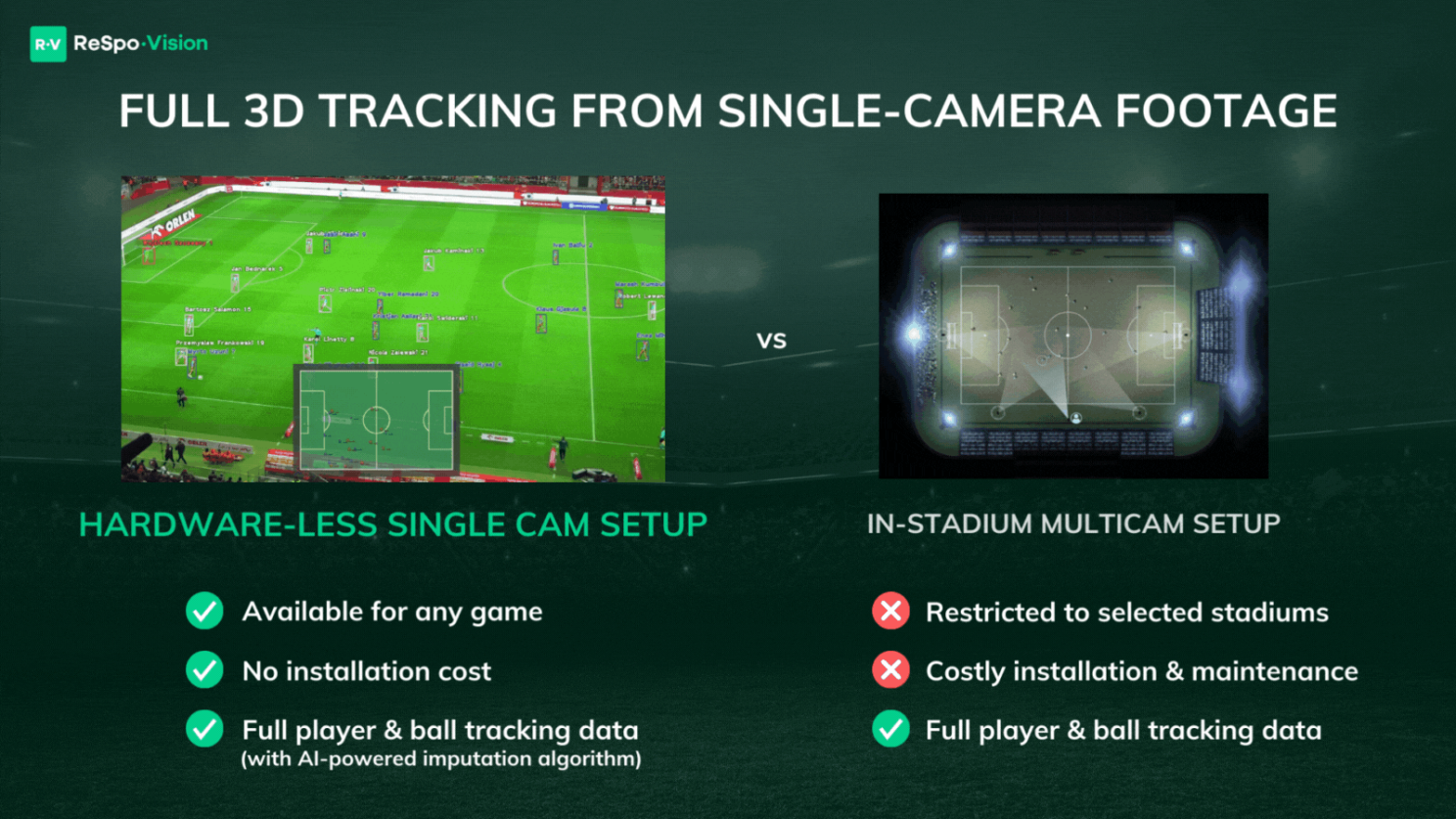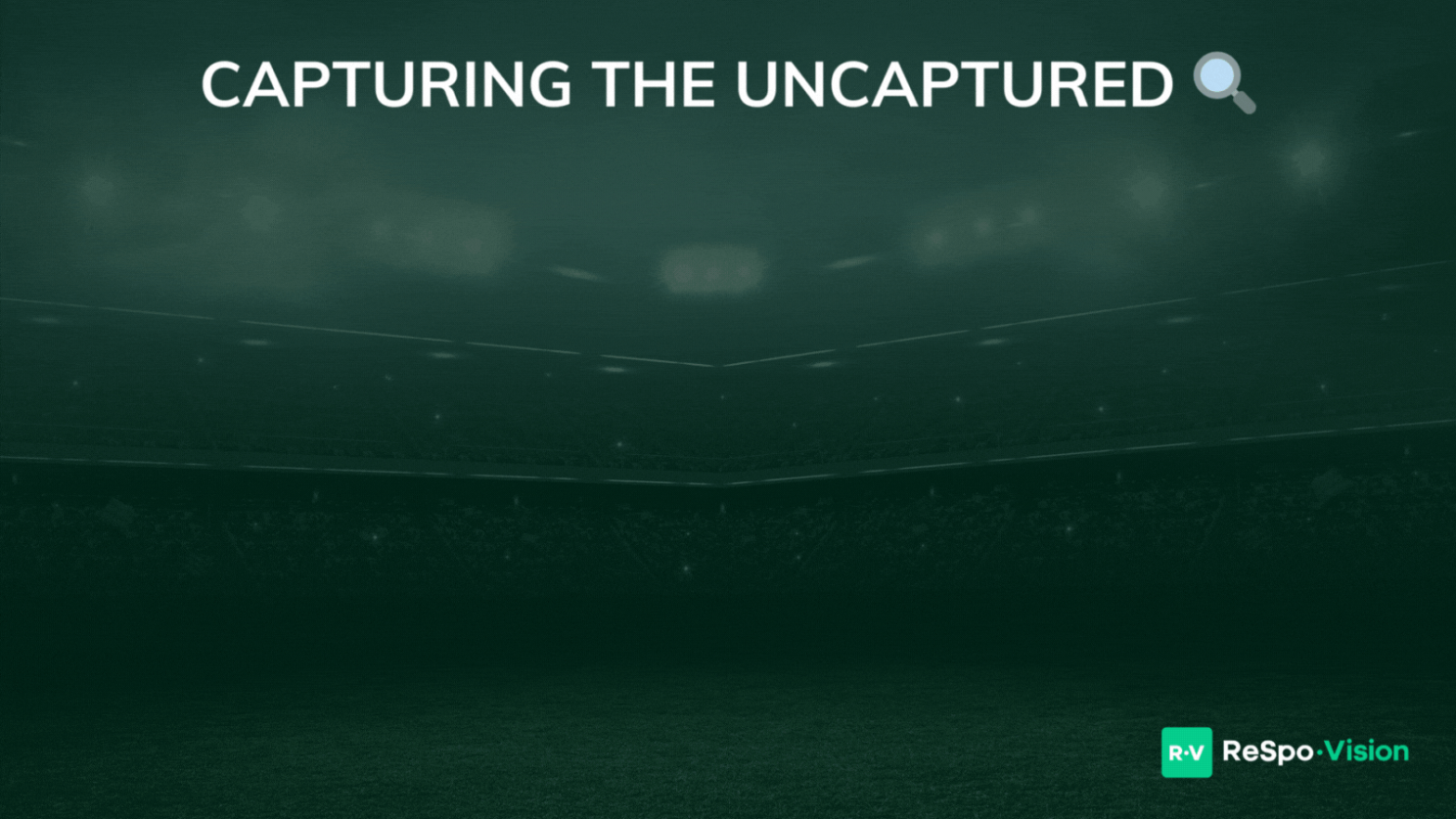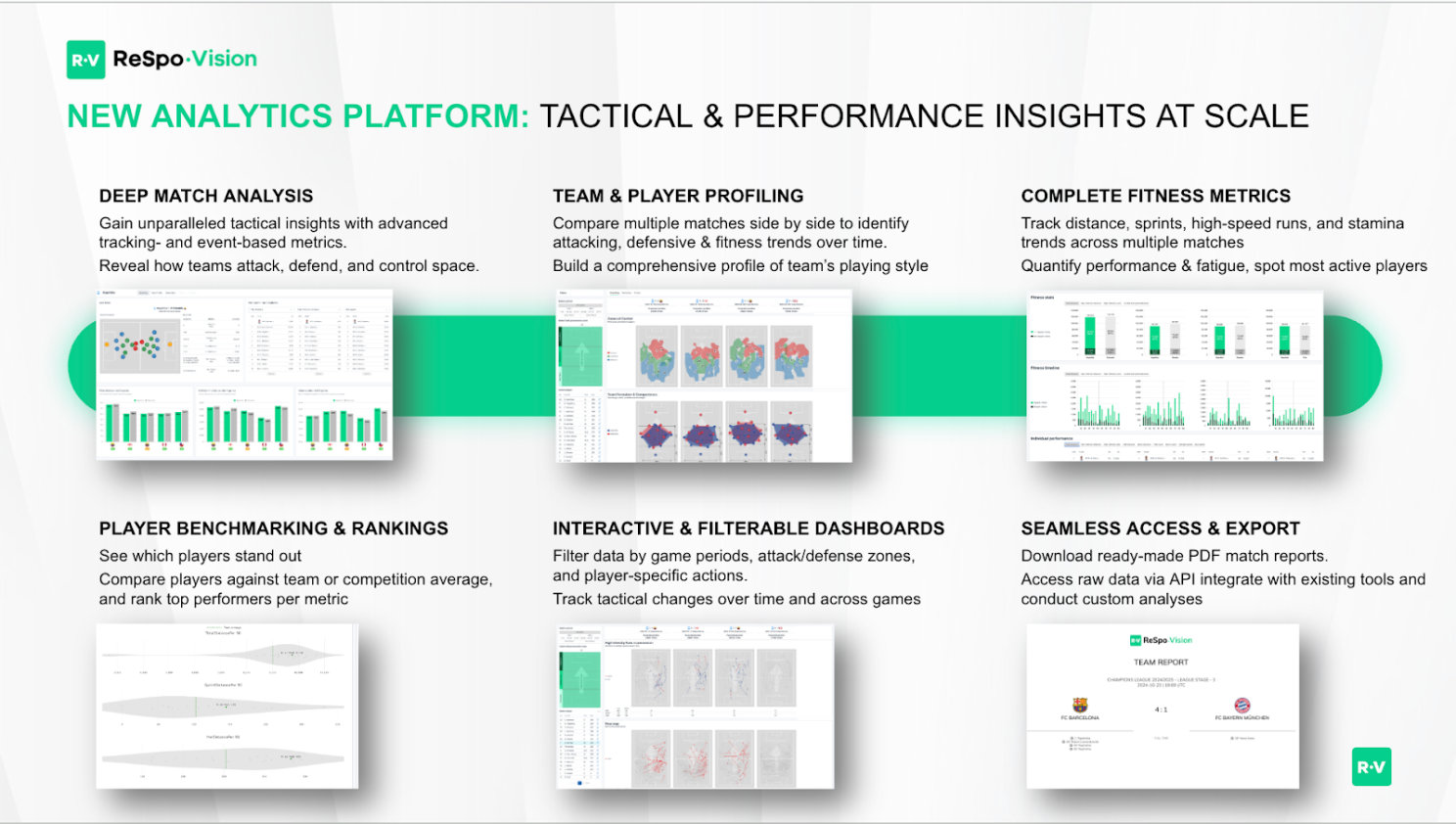
The future of football analytics: Why single-camera 3D tracking is a game-changer?

The data revolution in football
In football, the conversation around data has matured. Not all data is created equal, and the method of capture often determines the insight it can provide. The most common frameworks in football today rely on a combination of event data and tracking data. Event data is built around discrete actions, passes, shots, and duels, and is useful for summarising matches and scouting individual moments. But it only captures what happens on the ball. Tracking data, by contrast, follows players and the ball continuously throughout the match. It’s this layer that reveals shape, pressure, space occupation, and intent, the tactical dimensions that define modern performance.
Yet the systems that provide this level of insight have historically been limited to the top of the pyramid. Multi-camera optical systems, such as those used in Champions League or World Cup stadiums, require 6–20 calibrated cameras, in-stadium installation, on-site operators, and significant investment. Wearables, such as GPS, offer a cheaper alternative but often can’t be used in official matches, can’t track opponents, and only capture physical output, not tactical structure.
As a result, the richer the data, the harder it is to access. That gap is what single-camera tracking - both 2D center of mass tracking, and 3D skeletal tracking - now closes, and we are going to explain why below.
1. The Problem: Legacy systems are holding football back:
Despite the growing demand for analytics, legacy tracking systems continue to impose structural limitations. At the elite level, multi-camera setups provide highly accurate centre of mass data, with some even offering full 3D skeletal tracking. However, their cost and complexity mean they remain confined to a narrow set of clubs and competitions. Tier 2 leagues, national youth teams, academies, and emerging markets are often excluded due to practical constraints.
These systems are inherently dependent on in-stadium infrastructure. They require permanent camera installations, physical calibration, and frequent maintenance. For competitions held across multiple venues or clubs without full control of their matchday facilities, that simply isn’t feasible.
Even within single sports organisations, fragmentation can exist. A first team might use optical tracking, while a youth squad uses GPS, and a B team relies on video tagging. The result is a patchwork of systems that don’t align, limiting institutional learning and continuity across departments.
On top of that, the data delivered is often rigid. Some providers focus solely on dashboards, others only deliver raw coordinates, and few support end-to-end workflows across coaching, scouting, media, and performance teams.
What football has lacked is not data, but a scalable, unified system that removes friction without compromising depth.

2. The Solution: Why single-camera tracking is a game-changer
Single-camera 3D tracking represents a step-change in football analytics, especially in technical architecture. It is the first solution capable of capturing elite-level data using a single video feed, with no additional hardware, sensors, or in-person operators.
At the core is AI-based optical tracking, which reconstructs 3D movement by interpreting body posture, position, and interaction, frame by frame, using only visual input. The system ingests footage from a tactical or broadcast camera, runs detection algorithms to identify every player, referee, and the ball, and then estimates the 3D position of the ball and multiple body keypoints per human. These points are synchronised against a calibrated pitch model, correcting for camera distortion and generating accurate spatial data, all done remotely, with no pitch-side setup.
The result is full-body tracking at frame rates up to 50fps, unlocking tactical insight and fan engagement use cases previously out of reach.
Coaches and analysts can now, for example, measure pressing intensity with player orientation context, assess off-ball activeness based on whether players are opening or closing passing lanes, or quantify the pitch scanning ability of players.
This depth of insight is already being used in real-world contexts to gather consistent match data across multiple stadiums, some without any in-stadium technology, enabling standardised analytics for all matches in its top league. It is also more and more integrated in the tactical review process, using only matchday video to generate in-depth analyses that shape weekly game plans.
The single-camera approach removes the physical and financial bottlenecks of legacy systems while preserving (and in many cases enhancing) the level of granularity that analysts demand.

3. Real-world impact: How ReSpo.Vision is paving the way
At ReSpo.Vision we are at the forefront of operationalising single-camera tracking in elite and emerging football environments.
Our technology is already delivering value to clubs, federations, and tournament organisers through a unified, hardware-free system that combines data accuracy, tactical depth, and media-ready visuals, all from a single video feed.
In national competitions, ReSpo has served as the exclusive tracking and analytics provider for a major international tournament, processing every match remotely and delivering full tracking data, team and player performance reports, referee movement analytics, and tactical dashboards.
For professional clubs, ReSpo is enabling a new era of integrated, multi-squad data workflows. One historic European club has adopted our system across its youth and women’s divisions, unifying its analysis methodology club-wide. Before ReSpo, these teams had no access to tracking data. Today, they use advanced metrics such as pressing actions, average line height, space occupation, and body orientation. Coaches and analysts now quantify development in structured, comparable terms, building a shared tactical framework across age groups.
In another deployment, a second-division club in Central Europe integrated ReSpo’s solution across the full season, using matchday tactical feeds to perform detailed opposition scouting, post-match reviews, and phase-by-phase team shape analysis. The insights informed weekly tactical decisions and helped guide the team through a domestic cup campaign, culminating in a historic win.
Beyond performance teams, media and commercial teams also benefit. With the same tracking data, ReSpo clients can access virtual overlays, enabling immersive storytelling and sponsor-ready assets that can be used across broadcast, OTT, and social platforms. And in the future, will also be able to generate 3D replays, point-of-view highlights, with virtual camera transitions.
What makes ReSpo’s impact unique is how seamlessly it fits into real-world operations. There’s no hardware to install, no analysts to fly in, and no stadium dependency. All that’s required is a tactical or broadcast video feed, and within hours, teams can access world-class insights.

Conclusion:
Football’s analytical future is defined by how well you turn footage into insight. Single-camera tracking enables that transformation, from tactical video to 3D spatial data, from raw metrics to actionable reporting, from siloed analysis to unified systems. It unlocks the same capabilities that top clubs rely on, but without the legacy constraints.
For clubs, leagues, and federations ready to modernise how they analyse and prepare, this is truly an inflexion point. And the only thing it requires is giving ReSpo.Vision access to the existing tactical or broadcast footage.











